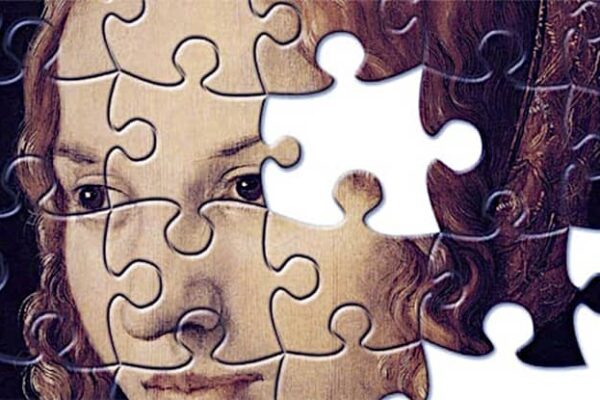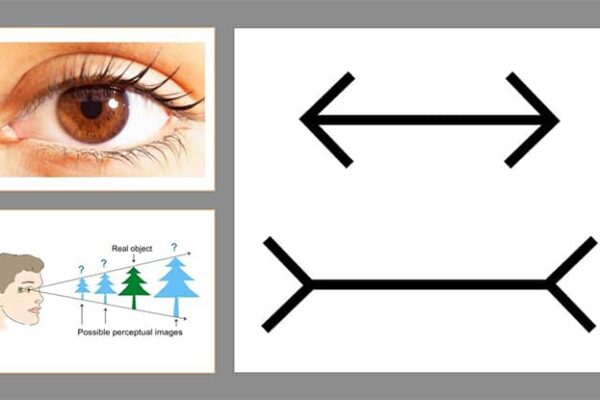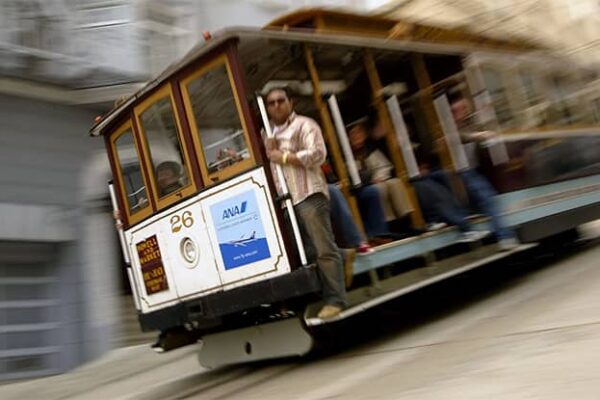“Silo” is a science fiction series set in a post-apocalyptic future. People live in a giant underground structure—the silo—where they are isolated from the outside world. They are led to believe that the Earth’s surface is uninhabitable due to a toxic environment. No one knows what exactly forced humanity to live in the silo, and any attempts to uncover the truth are strictly suppressed.
The genre of the series combines elements of dystopia, psychological drama, and science fiction. It also includes detective elements: the protagonist tries to uncover the mysteries of their world and understand the reasons for their existence within this confined space.
Main Themes:
- Control and Power: The series explores how the system governs society through limiting information and suppressing questions.
- Freedom and Truth: The characters face a dilemma: conform or seek the truth, despite the danger.
- Collective Psychology: The silo serves as a model of society where fear and loyalty shape social behavior.
- Individual Conflicts: The internal struggles of the characters revolve around the choice between personal benefit and collective interest.
The main goal of the analysis is to explore the psychological aspects revealed through the characters, the world-building, and their interactions. The examination aims to uncover how the series “Silo” uses its storylines and characters to illustrate key psychological phenomena. This analysis will help identify how the characters and society respond to isolation, suppression of freedom, and the necessity of living by imposed rules.
From the Perspective of Social Psychology:
- Investigating how a closed system affects individual behavior and shapes group dynamics.
- Exploring how manipulation and fear maintain social order.
From the Perspective of Individual Psychology:
- Analyzing the internal conflicts of the characters, their motives, and emotional experiences.
- Examining how people cope with anxiety about the unknown and resist the system.
The psychological analysis also addresses ethical and moral questions. The series raises the complex issue of choosing between survival and truth, submission and resistance. This analysis sheds light on why characters make certain decisions and how their actions influence the overall narrative.
An additional goal is to explore the effects of the series on the viewer. Why does “Silo” evoke an emotional response? What questions does it make the viewer ask themselves?
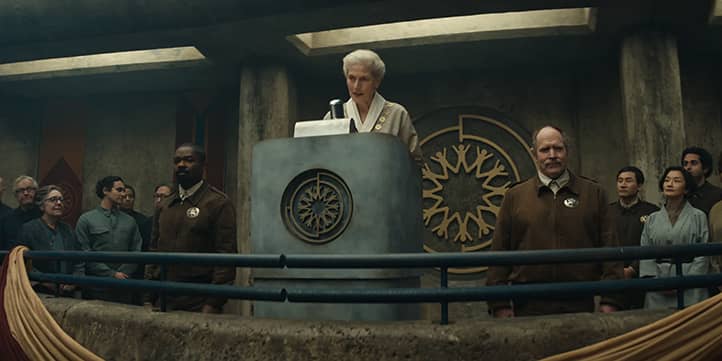
World-Building and Social Psychology
The world of the series “Silo” represents a closed social system where all aspects of life are governed by strict rules. The silo is not only a physical space but also a symbol of a societal structure that suppresses individuality and encourages collectivism for the sake of survival. The silo’s residents are deprived of the opportunity to leave their refuge and are restricted in their access to information about the outside world, leading to a constant sense of anxiety and dependence on the system.
The social dynamics in the silo resemble a microcosm of any isolated society: from a ship stranded in the middle of the ocean to an authoritarian state. In such conditions, several psychological phenomena emerge: suppression of personal freedom, increased reliance on leaders, and entrenched fear of the unknown. The ruling class controls not only resources but also the perception of reality, maintaining order through propaganda and punishment.
Study of the Closed Social System
The silo’s closed system creates a unique environment where isolation becomes the primary factor influencing the psyche. The lack of contact with the outside world fosters fear of the unknown, which strengthens people’s dependence on rules and authorities.
- Psychological Isolation: Despite the physical proximity of people in the silo, the sense of isolation is intensified by the lack of freedom of choice and communication with the outside world. This leads to a deficit of new ideas and emotional stagnation, providing fertile ground for control.
- Hierarchical Structure: The social hierarchy in the silo is strictly regulated. The upper levels are associated with privilege and power, while the lower levels symbolize poverty and hard labor. This structure exacerbates class inequality and feelings of injustice, creating internal conflicts and tension.
- Collective Consciousness: In isolation, residents begin to perceive life in the silo as the only possible reality. Ideas that challenge this perception are suppressed, and those who express them are seen as threats to the collective.
The Impact of Limited Information and Control on Society’s Behavior
Control over information is the primary tool of power in the silo. The residents are led to believe that the world outside the silo is deadly, and any attempt to verify this information is punishable.
- Manipulation of Truth: The authorities control the information people receive, creating an illusion of complete transparency. Any doubts or attempts to learn more are met with harsh measures, fostering an atmosphere of fear.
- The “Potemkin Village” Effect: People see only what they are permitted to see. Convincing but false evidence, such as videos of the outside world, sustains the illusion of safety within the silo. This helps build a system where no one asks questions.
- The Psychology of Submission: In such conditions, residents develop “learned helplessness”—a feeling that their actions do not matter. They accept the rules, even if they seem unjust, in order to survive.
Mechanisms of Maintaining Order
Powerful social tools are employed to sustain stability in the silo, suppressing any expressions of individuality and resistance.
- Propaganda: The system instills in residents the belief that their way of life is the only viable and correct option. Any attempts to change the order are portrayed as selfish and dangerous to everyone. This fosters loyalty to the system, even among those who suffer from its injustices.
- Fear of Punishment: Punishments for disobedience serve as examples to others. The fear of being cast out to the surface—where survival is said to be impossible—is the primary deterrent.
- Divide and Rule: The system encourages division among residents by promoting informants and distrust. This prevents the formation of opposition and strengthens the ruling power.
- Ritualization of Rules: Great importance is placed on adherence to rituals, turning everyday actions into a means of control. This reinforces the psychological sense of the order’s legitimacy.
The world-building in “Silo” demonstrates how isolation, hierarchy, and restricted information can form the foundation for manipulating the consciousness and behavior of a society. The psychological aspects reveal how such conditions create obedient but internally broken individuals who fear the truth more than lies.

Characters: Individual Psychological Profiles
In the series “Silo”, characters are not just participants in the storyline but also carriers of ideas and psychological phenomena. Each embodies specific traits that emerge within a closed system. Their personal motives, internal conflicts, and interactions emphasize the series’ key themes: the struggle for freedom, fear of the unknown, and the influence of social pressure.
The individual portraits of the characters provide a deeper understanding of how a closed system affects people’s psyche and worldview. The protagonist highlights how the pursuit of truth can clash with inner doubts and external threats. The antagonists illustrate the complex moral dilemmas of those who uphold the system, while secondary characters reveal how different personality types adapt to isolation and restrictions.
Protagonist: Juliette Nichols (Jules)
Juliette Nichols is the central character whose story explores the theme of resistance to the system. Her journey is one of a fight for truth, personal loss, and the realization of her role in dismantling the established order.
- Personality Traits: Juliette stands out for her independence, resilience, and pragmatism. Working as a mechanic in the lower levels, she has developed a practical mind and the ability to solve problems on her own. This quality makes her less susceptible to propaganda, unlike those closer to the leadership.
- Motives: Her actions are driven primarily by a personal tragedy involving the loss of a loved one and her desire to uncover the truth about the world. Juliette is not just seeking answers—she aims to expose the lies that keep people in submission.
- Internal Conflicts: Throughout the series, she faces the dilemma of pursuing the truth at great personal risk or accepting the established order. Her choices often lead to isolation, causing her to question her own righteousness. Juliette struggles with loneliness and guilt over the consequences of her decisions, but her strong sense of justice compels her to keep going.
Antagonists and System Supporters
Characters who support the system are not always evil or heartless. Their actions are dictated by fear, the necessity of maintaining order, or personal convictions.
- Bernard Holland: The head of IT and one of the system’s chief proponents. His stance is based on the belief that knowledge is dangerous and control is essential for survival. Bernard represents the elite, justifying his actions as being for the “welfare” of society.
- Reasons for His Beliefs: His faith in the destructive power of information stems from years of working with control systems. He understands that even a small data leak could shatter the fragile balance.
- Role of Environment: Being in the upper levels of the social hierarchy, he views society as a mass to be guided rather than as equals. Bernard deliberately suppresses dissenters, though his methods are sometimes excessively harsh, revealing his fear of losing control.
- Jones (The Sheriff): As a law enforcement figure, he is caught between the system and the people. His role illustrates the conflict between the need to maintain order and empathy for those who suffer under the strict rules.
- Reasons for His Beliefs: Jones genuinely believes in the importance of laws, but his personal experiences occasionally undermine this faith. He strives to act within the system’s framework but gradually realizes that his actions only prolong the suffering of innocents.
Secondary Characters
Secondary characters complement the depiction of silo society, showing how different individuals adapt to isolation and control.
- Allison Becker: The wife of former sheriff Holston Becker, whose quest for the truth becomes a catalyst for events. Her curiosity and thirst for knowledge illustrate how even seemingly submissive individuals can become a threat to the system.
- Behavior: Allison takes risks despite her fear, and her fate demonstrates the cost of breaking the rules.
- Theme of Freedom: Her story raises the question: Is the truth worth the sacrifices required to uncover it?
- Holston Becker: The former sheriff who initially believed in the system but begins to doubt its validity after his wife’s actions.
- Behavior: His tragic journey reflects the divide between duty and personal beliefs.
- Theme of Individuality: Holston shows how the system suppresses individuality, even for those in high positions.
- Martha Walker: Juliette’s mentor and inventor. Her character demonstrates the power of human intellect and resilience even under pressure.
- Behavior: Martha supports Juliette with her knowledge while remaining in the background. She symbolizes wisdom and resistance through intellect.
- Theme of Truth: Her assistance underscores the importance of knowledge as a tool for combating lies.
The individual psychological portraits of “Silo” characters show how different personality types respond to isolation, control, and the challenges posed by the system. Both main and secondary characters reveal key themes through their choices, conflicts, and interactions, transforming the series into a multilayered exploration of human nature.
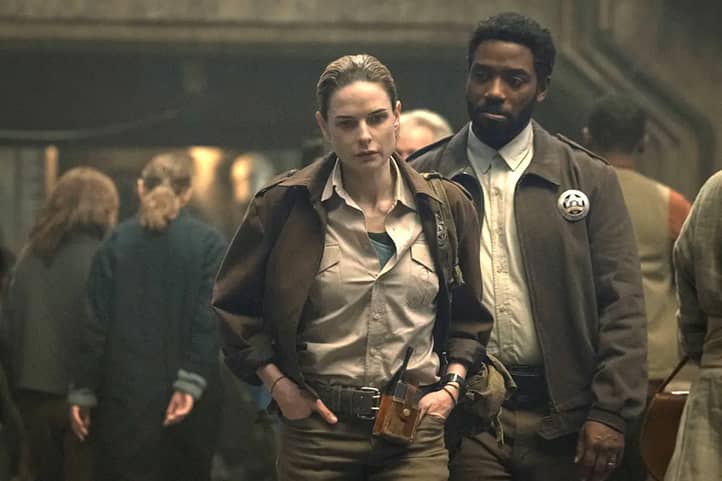
The Theme of Trust and Control
Trust and control are central themes in the series “Silo”, shaping not only the dynamics between characters but also the structure of society itself. In a confined space where information is strictly limited, and any deviation from norms is punished, trust becomes a rare and valuable resource. Conversely, the system builds its mechanisms of control, relying on fear and manipulation to maintain power and order.
Through the relationships between characters, the series examines how complex circumstances alter the nature of trust. The threat of betrayal, constant surveillance, and deliberate misinformation force people into isolation, choosing caution over openness. On the other hand, losing control over a situation leads to chaos, revealing the hidden fears and weaknesses of everyone involved.
These aspects are evident on a personal level (e.g., in Juliette Nichols’ relationships) and on a societal level, where the central question arises: Is sacrificing freedom for order justified?
Exploring Trust Among Characters Amid Constant Threats and Manipulation
In the atmosphere of the silo, trust is rare due to the systemic mistrust cultivated by the system. Characters, doubtful of one another, must choose between collaboration and self-preservation.
- Juliette Nichols and Her Circle: Throughout the series, Juliette is forced to seek allies but struggles to trust others due to her experiences of loss and betrayal. For instance, her relationship with Martha Walker is built on rare mutual understanding in the silo, though it retains a sense of fragility.
- The Role of Manipulation: The system deliberately undermines trust among residents. For example, spreading misinformation turns everyone into a potential spy or traitor in the eyes of others. This is vividly illustrated in the residents’ reactions when someone starts asking “forbidden” questions.
Psychological Pressure from the System on Individuals and Society
The silo’s control system uses psychological pressure to govern people’s behavior. This pressure manifests through fear of punishment, isolation, and constant surveillance.
- The Effect of Fear: Punishment for dissent or curiosity forces residents to suppress their questions. This is especially evident in the case of Holston Becker, who initially supports order but begins to realize the weight of the system’s pressure after losing his wife.
- Social Pressure: Those who start doubting the system face isolation and societal condemnation. This pressure becomes a powerful control tool, forcing individuals to remain passive for their survival.
- Control Over Information: Limiting knowledge and controlling the flow of information create an artificial sense of stability. However, for those like Juliette, who begin uncovering secrets, this pressure becomes unbearable.
The Impact of Losing Control on Behavior and Decision-Making
When the system’s control begins to weaken, silo residents encounter a new type of chaos that alters their behavior.
- Juliette and Her Actions: As the central character, Juliette often finds herself in situations where the system loses control over her actions. This allows her to act decisively but also leads to inner conflicts. Her courage provokes dissatisfaction among others who fear the consequences.
- Society’s Reaction: The loss of control over the established order (e.g., during mass protests) causes intense stress among residents. Some panic, while others choose to act, though these actions are often chaotic and destructive.
- The Moral Choices of Antagonists: When key figures of the system, such as Bernard Holland, begin losing control, their actions become increasingly radical. The fear of losing power pushes them toward brutal methods justified by the need to maintain order.
The theme of trust and control in “Silo” highlights how fragile relationships and order can be under conditions of isolation. The system’s manipulations suppress individuality, but moments of lost control bring glimpses of truth and freedom, revealing the complexity of human nature.
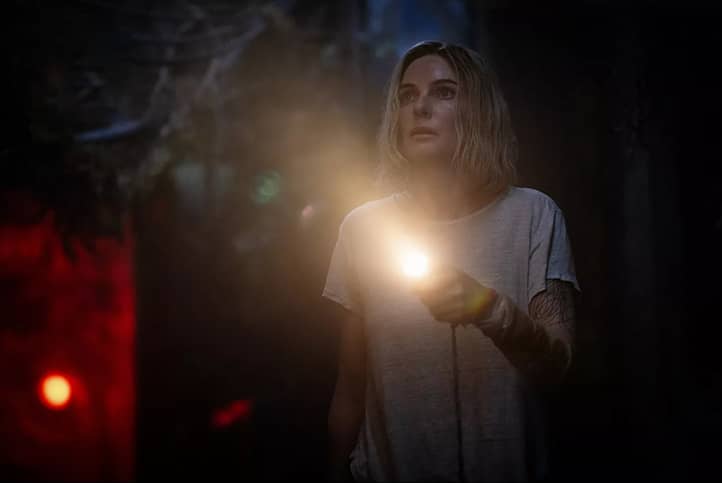
Fear of the Unknown and the Desire for Knowledge
In the series “Silo”, the fear of the unknown and the thirst for knowledge are two opposing yet deeply interconnected motives that drive the characters and shape the central conflicts. The confined space, limited access to information, and shrouded secrets evoke both a longing for safety and an insatiable curiosity in people. These psychological aspects are key to understanding the characters’ behavior: some fear disrupting their familiar world, while others sacrifice everything to find answers.
The desire to uncover the truth ties to the fundamental human need to make sense of reality. However, in an environment where curiosity can cost one’s life, this pursuit becomes both heroic and perilous. Encounters with the unknown trigger a wide range of responses, from paralyzing fear to resolute determination to break through barriers. These emotional states reveal the complexity of maintaining a balance between self-protection and the courage to venture beyond the familiar.
Psychological Aspects of the Pursuit of Truth: Where the Desire for Knowledge Comes From
The desire to uncover hidden truths is inherent in human nature, rooted in survival instincts, the need to control circumstances, and personal identity.
- The Nature of Curiosity: People seek the truth because information makes them feel more secure and confident. However, in the silo, access to the truth is strictly limited. For some characters, this restriction creates an internal conflict between following the rules and striving to uncover forbidden secrets.
- Motivation of the Protagonist: As the main character, Juliette Nichols is driven by personal loss and a sense of injustice. Her quest to learn the truth about her loved ones’ deaths evolves into a broader interest in the world beyond the silo. She embodies the archetype of the “seeker of truth,” for whom sacrifices and risks are unavoidable to achieve the goal.
- Social Suppression of Curiosity: The system actively suppresses the desire for knowledge by fostering fear of the unknown. For example, “going outside” is portrayed as a deadly punishment, serving as a warning to those who might start asking questions.
Facing the Unknown: How Characters React to the Mysteries of the Outside World
In the series, characters repeatedly encounter the unknown, challenging their beliefs, inducing fear, and simultaneously prompting them to act.
- Fear as a Basic Reaction: For many silo residents, the unknown is synonymous with danger. The lack of knowledge about the outside world evokes terror, reinforced by propaganda. For instance, even discussing what lies beyond the silo is considered taboo. For characters like Bernard, fear of the unknown justifies their attempts to maintain the system’s stability at all costs.
- Confronting Fear: In contrast, characters like Juliette see the unknown as a challenge. Her exploration of engineering systems and her work with clues left by Holston demonstrate how rational thinking helps manage fear. However, even she experiences moments of doubt, especially when the truth turns out to be far more complex than she anticipated.
- Moments of Revelation: Confronting the truth about the outside world becomes a pivotal turning point. For those ready to embrace the truth, this discovery transforms their perception of themselves and society. But for those who fear disrupting the existing order, the truth becomes a source of profound inner turmoil.
Through the theme of fear of the unknown and the desire for knowledge, “Silo” illustrates how people balance the instinct for self-preservation with the drive for truth. This conflict forms the foundation of the dramatic plot while serving as a mirror for viewers, reflecting their own fears and aspirations.
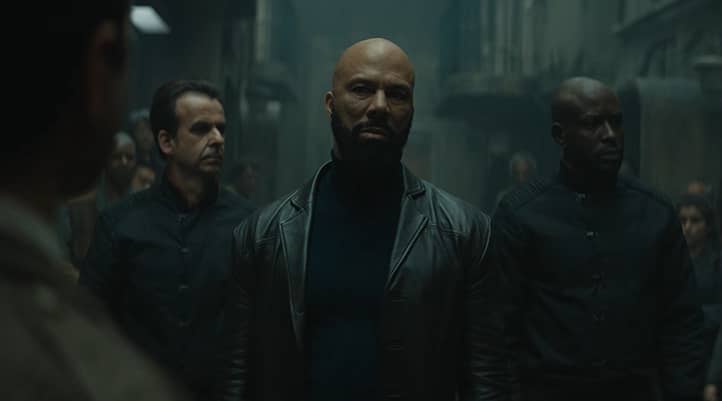
Individual vs. Collective
The conflict between individual aspirations and collective interests is one of the central themes of “Silo”. In a closed society where every element of the system serves to maintain stability, any display of individualism is perceived as a threat. This creates an internal struggle: the desire for personal freedom versus the need to obey rules to preserve order.
The silo system is designed to suppress individuality, emphasizing the importance of the collective. However, characters like Juliette Nichols challenge these norms, striving to change an unjust order. Their actions question the stability of collective ideology and demonstrate that sometimes change is impossible without sacrifices. At the same time, the tension between individual and society raises questions of loyalty: is submission to the system a conscious choice, or merely a reaction to fear?
This theme reveals deep psychological mechanisms governing both individuals and collectives. It illustrates how social structures suppress initiative and what happens when someone starts to act against established norms.
The Psychology of the Conflict Between the Individual and the Collective
In the silo, individual thinking clashes with the collective’s powerful resistance to change. This conflict manifests on multiple levels.
- Individualism as a Threat: The silo’s system seeks to maintain stability at any cost, suppressing any signs of dissent. Those who break the rules face isolation or punishment. For example, Juliette, who begins asking questions and searching for the truth, is seen as a threat not only by the system but also by many residents who fear destabilization.
- The Desire for Change: Juliette is driven not only by personal pain over the loss of loved ones but also by an awareness of the system’s injustice. Her actions, whether seeking answers or confronting authority, illustrate how the desire for change can overcome fear of consequences.
- Fear of Disrupting Order: For most silo residents, preserving order is more important than personal freedoms. The collective consciousness, cultivated by the system, convinces people that any change will inevitably lead to chaos. This explains the passivity of most characters, who prefer to ignore obvious problems to maintain familiar stability.
Loyalty to the System: A Defense Mechanism or a Conscious Choice?
Loyalty to the system in the series often manifests as a defense mechanism driven by fear of punishment or the unknown. For some characters, however, it is also a conscious choice based on their beliefs.
- Loyalty Out of Fear: Most silo residents remain loyal to the system because they fear punishment or exile. This is a form of psychological defense, allowing them to avoid cognitive dissonance: it is easier to believe the order is just than to acknowledge its oppression. This type of loyalty is especially evident in secondary characters who choose silence even when witnessing injustice.
- Conscious Support of the System: Bernard Holland, one of the main representatives of authority, exemplifies a character who consciously supports the system. His beliefs are rooted in the necessity of maintaining control for the collective’s survival. To him, the destruction of the established order is more dangerous than any injustice, as it could lead to society’s collapse.
- Conflict of Loyalty: Even among system supporters, doubts arise. For instance, Holston Becker initially follows the rules but begins questioning their justification after losing his wife. His internal conflict demonstrates how loyalty can transform under the influence of personal tragedy.
The theme of “Individual vs. Collective” in “Silo” highlights the complexity of human nature. An individual striving for change faces the collective’s fear of chaos, while the system suppressing individualism reveals how fragile an order built on fear truly is. This conflict prompts viewers to reflect: where is the boundary between the need to protect society and the right of an individual to freedom?
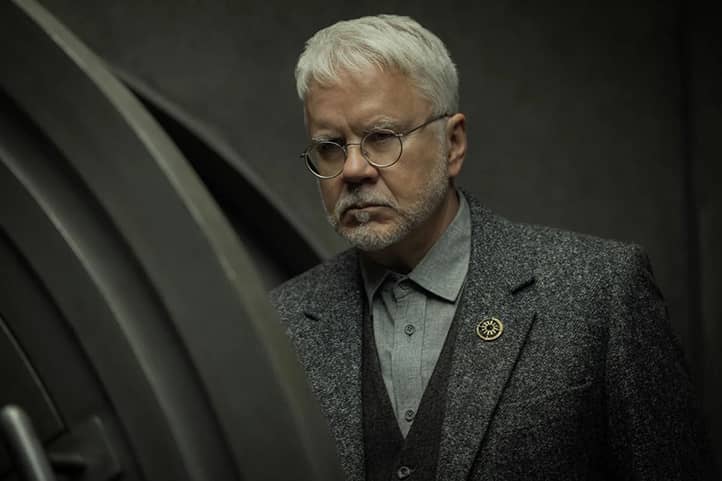
Ethical Dilemmas and Morality
The series “Silo” places its characters in difficult ethical situations, exploring how extreme conditions affect their understanding of right and wrong. In a closed system where resources are strictly limited, and information is tightly controlled, characters are forced to make decisions that challenge their moral principles. Every action, whether adhering to or breaking the rules, has consequences not only for the individual but also for society as a whole.
These dilemmas, often balancing survival and morality, emphasize the complexity of human nature. How can one preserve humanity when rational choices contradict ethical ones? How can the boundaries of good and evil be defined in a society built on manipulation and lies?
These questions give the series profound depth, turning each character’s actions into an opportunity for viewers to reflect on their own values.
Analyzing Characters’ Decisions in Difficult Situations: Morality vs. Survival
The silo is a place where survival often requires compromising one’s conscience. Characters repeatedly face the choice of adhering to moral principles or making decisions that ensure safety but may violate ethical norms.
- Juliette Nichols: Pursuit of Truth Against the System
Juliette constantly grapples with moral dilemmas. She seeks to uncover the truth about the silo, but her quest endangers not only herself but also those around her. Her choice—whether to keep digging or to maintain order—highlights the struggle between her duty to herself and her responsibility to society. For her, morality lies in the pursuit of truth, even if it threatens to upend the lives of others. - Holston Becker: Loyalty to Rules vs. Personal Feelings
Sheriff Holston initially abides by the laws of the silo, but after the tragedy involving his wife, he faces an internal conflict. His decision to leave the silo and seek the truth represents a step beyond traditional morality, where survival takes precedence over truth. This demonstrates how personal emotions can reshape priorities, leading one to choose feelings over safety. - Sacrifices for the Greater Good
Some characters must make decisions that endanger individual lives to ensure the survival of the collective. For instance, denying help to the sick or punishing those who challenge the order seems necessary in a world with limited resources. These actions illustrate how the pressure of circumstances influences ethical standards.
How Does “Silo” Address Good and Evil in Conditions of Limited Resources and Knowledge?
In the silo, the concepts of good and evil become relative. The characters often act with incomplete information, relying on their understanding of the situation, which leads to contradictory moral choices.
- Good as Rationality
For those governing the silo, such as Bernard Holland, evil is justified by necessity. Control, manipulation, and withholding information are viewed as the only means to prevent chaos. Bernard believes his actions, though cruel, serve the greater good of society. This forces viewers to ponder: can evil still be considered evil if it saves lives? - Evil as Inaction
For most silo residents, evil manifests not through actions but through inaction. They witness injustice but choose to ignore it, believing that their intervention would only worsen the situation. This passivity raises an important ethical question: is inaction a lesser evil if it protects lives? - Limited Knowledge and Moral Choices
The characters often act with insufficient information. For example, Juliette, driven by her pursuit of truth, does not always understand the consequences of her struggle. This underscores that in such conditions, good and evil cannot be clearly defined since the outcomes are unknown.
“Silo” masterfully explores ethical dilemmas, showing that good and evil in extreme conditions do not always have clear boundaries. Through the choices of its characters, the series compels viewers to consider how they might act in similar circumstances: would they prioritize survival over morality or risk everything to uphold their principles?
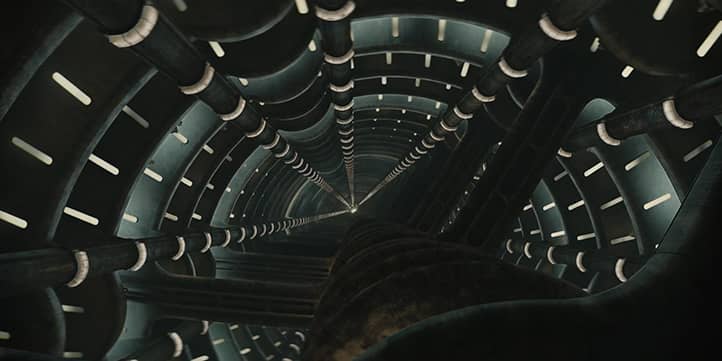
The Metaphorical Significance of the Silo
The silo in the series is not just a physical structure but also a powerful metaphor reflecting the internal and external constraints faced by individuals and society. Its walls symbolize the boundaries of thought, social barriers, and fears that keep people confined within the established system.
This closed system serves as an allegory for examining the psychological boundaries that can be imposed both by individuals and society. The silo’s inhabitants believe in certain rules and accept them as immutable truths, illustrating the mechanisms behind cognitive and social limitations. At the same time, the desire of some characters to go beyond this structure symbolizes the pursuit of truth and freedom.
The Silo as a Metaphor for Psychological Constraints
The silo can be seen as a metaphor for the mental frameworks shaped by social norms, cultural traditions, and personal experiences. Its enclosed structure symbolizes the limitations imposed on both individual consciousness and society.
- Boundaries of Thought
The people in the silo are raised to accept certain rules as unquestionable. This reflects cognitive schemas that guide thoughts and behaviors while restricting perception of reality. For example, the belief that leaving the silo is fatal paralyzes even those who recognize the illogicality of this prohibition. This mirrors the phenomenon of cognitive inertia, where entrenched beliefs prevent individuals from processing new information. - Social Barriers
Social barriers in the silo manifest through strict hierarchies and systems of control. Everyone has a defined role and cannot exceed their duties. This is a metaphor for social stereotypes that dictate how a person should think, act, and define themselves. Such restrictions create an illusion of stability while simultaneously suppressing individuality. - Personal Limitations
Characters striving to defy the rules face not only external resistance but also internal fears. For instance, Juliette and Holston experience doubt and uncertainty before deciding to challenge the system. This illustrates the struggle individuals face with their own psychological barriers, such as fear of the unknown or the need for approval.
Possible Interpretations Through Various Psychological Theories
The metaphorical meaning of the silo can be explored through the lens of different psychological concepts, each offering a unique perspective on limitations and the desire to transcend them.
- Psychoanalysis. From a psychoanalytic perspective, the silo represents the repressed unconscious. Its closed nature and rigid boundaries resemble defense mechanisms like repression or suppression, which prevent individuals from confronting unpleasant truths. Characters’ attempts to escape the silo symbolize the quest for self-awareness and the destruction of illusions imposed by society or their own superego.
- Humanistic Psychology. In a humanistic view, the silo represents constraints that hinder self-actualization and personal growth. According to Maslow, basic needs for safety and belonging are met in the silo, but the needs for self-expression are stifled. Juliette, who strives for the truth, embodies a person trying to reach the peak of the pyramid despite environmental resistance.
- Cognitive-Behavioral Theory. The silo can be seen as a cognitive trap: its residents are influenced by false beliefs perpetuated by the system. These beliefs shape their behavior, preventing them from questioning imposed rules. The characters’ efforts to break free symbolize the process of cognitive restructuring, where old schemas are replaced with more adaptive ones.
- Social Psychology. From a social psychology perspective, the silo reflects the phenomenon of groupthink, where individual opinions are suppressed to preserve collective harmony. The rules of the silo act as a tool of social control, preventing critical evaluation of the situation.
The silo as a metaphor for psychological constraints highlights the importance of individuals recognizing their boundaries and striving to overcome them. The series challenges viewers with questions: where do social norms end, and personal barriers begin? Can these walls be broken without disrupting the balance between the individual and the collective? Such reflections make “Silo” a significant work for understanding not only society but also the inner world of the individual.
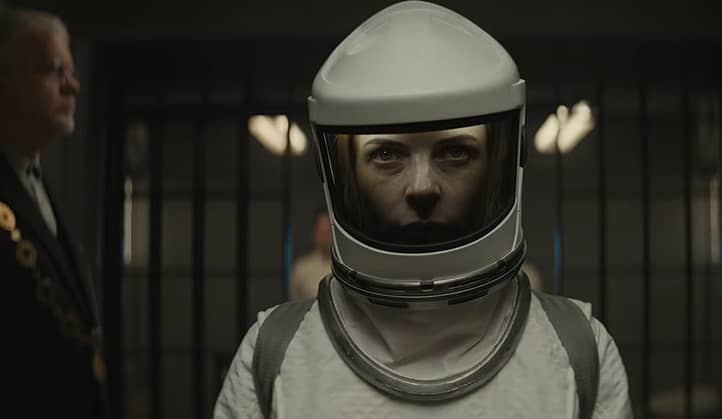
Conclusion
The series “Silo” presents a multi-layered story that delves into the depths of human psychology through the lens of a closed world, social conflicts, and the struggle for truth. Every aspect of this fictional universe—from its rigid rules to the personal dramas of its characters—raises questions relevant to viewers in real life. The key psychological takeaway is that even in the most constrained circumstances, humans remain meaning-seeking beings who strive for truth and must balance individual needs with the collective good.
The characters vividly demonstrate how social and personal boundaries shape their behavior, motives, and choices. The protagonist becomes a symbol of resistance, embodying the strength of an individual willing to fight for freedom and truth despite fear and systemic manipulation. Meanwhile, those who support the system illustrate the complexity of moral choices, where safety and order are prioritized over truth. The secondary characters, in their collective nature, highlight how often people fall victim to cognitive and social biases that impede their growth.
The emotional impact of the series lies in its ability to touch upon universal human fears and aspirations. The silo’s confined world serves as a reminder of the limitations we face in real life—be they social norms, personal fears, or the necessity of adhering to external rules. The tense situations the characters encounter compel viewers to reflect on how they might act in similar circumstances. This effect is amplified by the dynamics of relationships, where friendship, betrayal, and hope play key roles, evoking deep empathy in the audience.
The series also opens space for reflection on the boundaries of freedom, trust, and truth in our everyday lives. How dependent are we on the information we accept as truth? Which boundaries do we voluntarily embrace, and which are imposed upon us? Most importantly, how far is one willing to go to break free from these constraints? These questions carry practical significance, encouraging viewers to reevaluate their beliefs and life principles.
Silo is a story that not only entertains but also provokes deep contemplation, inspiring us to seek answers to the most challenging and essential questions about freedom, truth, and human nature.
Recommendations for Further Research
There are numerous aspects that can be explored more deeply, particularly regarding character interactions and their psychological mechanisms. For example, the impact of long-term stress and isolation on the characters’ mental health can be studied. The series frequently portrays states of anxiety and depression, which can be analyzed from a psychophysiological perspective to understand how prolonged confinement in an isolated society affects decision-making, perception of reality, and interpersonal relationships.
Another intriguing direction is the study of cognitive distortions that arise under the influence of limited information. How is information processed and distorted in conditions of complete isolation and manipulation, and how does this affect behavior and worldview? The influence of cognitive biases, such as confirmation bias or echo chambers, can be examined through theories of cognitive dissonance or social influence.
Application of Other Psychological Theories for Interpreting the Series
In addition to social psychology theories already used to analyze interactions within the closed community, several other psychological approaches could expand the understanding of events in the series. Applying Maslow’s hierarchy of needs can analyze how the series’ characters satisfy their needs for safety, social belonging, and self-actualization within rigid social structures.
Freud’s theories, particularly the concept of the unconscious, could provide insights into the characters’ behavior. Many of their decisions and reactions may stem not only from conscious desires and motives but also from unconscious fears, desires, and conflicts. Exploring such deep processes would offer a fuller understanding of their inner experiences and motivations.
Theories of group psychology and leadership could also be applied to analyze the dynamics of power in the series. How do various characters establish and maintain their positions in the hierarchy, and what psychological mechanisms underlie these processes? The influence of leadership and group pressure on individual actions can be examined through the lens of social influence and conformity theories.
For further research, several key directions emerge: deeper analysis of the characters’ cognitive and emotional processes, application of theories on needs and the unconscious, and the study of psychological aspects of group dynamics and leadership. These investigations will not only enhance understanding of the mechanisms underlying the series but also offer new perspectives on social processes in real life.

